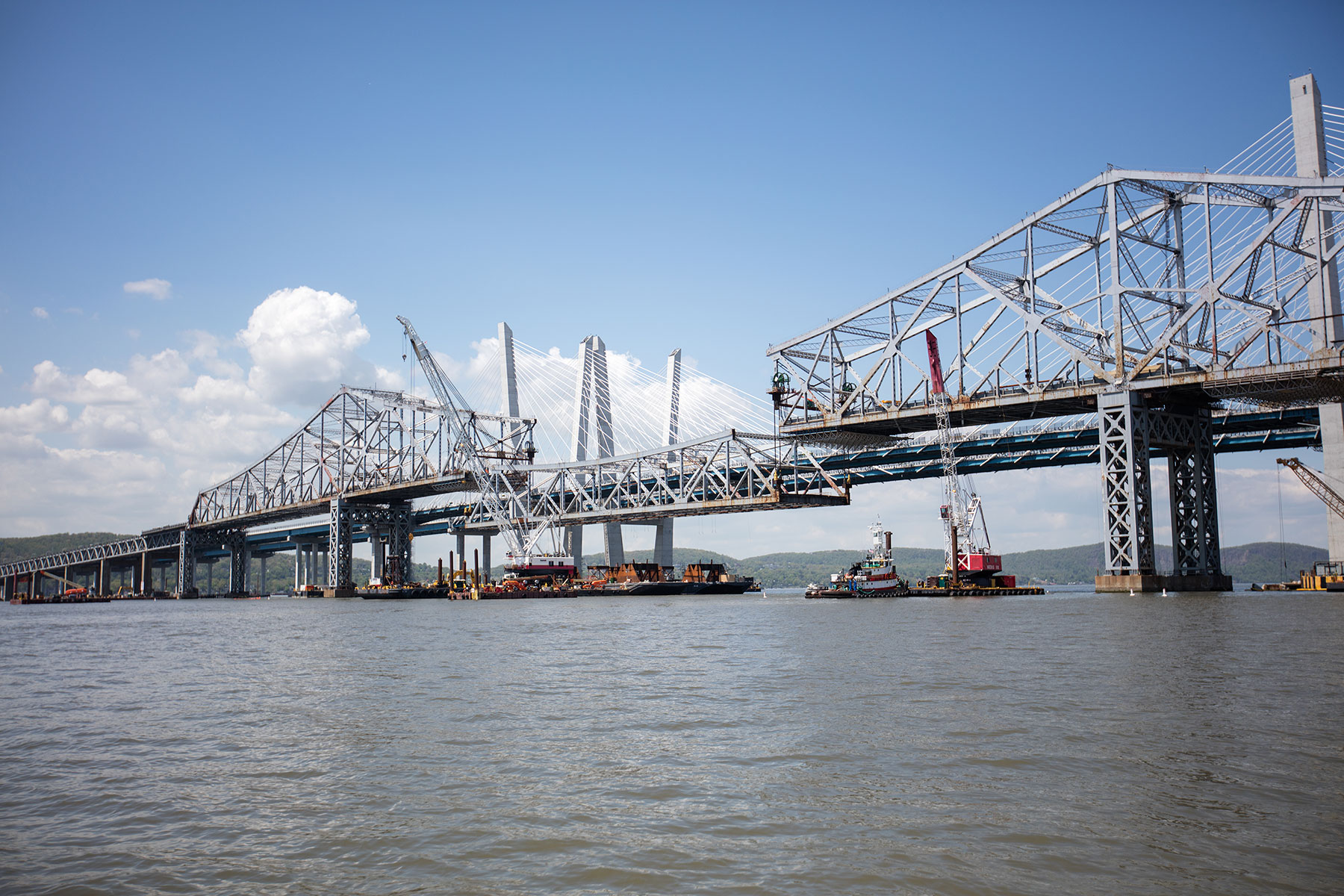
The U.S. Coast Guard is advising mariners to stay clear of project equipment and support vessels.
With the 2018 recreational boating season kicking off this Memorial Day weekend, the U.S. Coast Guard, the New York State Thruway Authority, Tappan Zee Constructors, LLC (TZC) and local law enforcement are reminding boaters of the safety measures near the New NY Bridge’s active work site.
As TZC’s dismantling efforts of the Tappan Zee Bridge continue near the river’s main navigation channel, the Coast Guard is advising mariners to stay clear of all overhead work and to maintain a safe distance of 1,000 feet from all construction equipment and support vessels.
Boaters should expect periodic full and partial closures of the main navigation channel and adjacent span areas through the end of the year. The closures are necessary to ensure the safety of boaters and workers as overhead activities continue at the new bridge’s main span.
For the latest information regarding upcoming closures, boaters should tune to Marine Radio Channel 22A or view the First District Local Notice to Mariners, both of which are provided by the U.S. Coast Guard. Closure times and dates, which are subject to change, are also available on the New NY Bridge project’s Twitter feed (@NewNYBridge) or by calling 914-789-3224. Boaters can also communicate with TZC through Marine Radio Channel 16.
When the main navigation channel is open, boaters are urged to use the center 600 feet of the channel to navigate north or south with no wake, at a maximum speed of five knots.
Lighted buoys also mark key locations, including the prohibited Safety Zone and construction mooring locations. Boaters should steer clear of these areas, as well as any bridge piers or construction equipment.
Additional safety measures can be found at NewNYBridge.com/Boater. The site also includes an interactive map, which utilizes GPS technology to track all TZC vessels and barges.
The New York State Thruway Authority provides this information as a public service. Any reliance you place on such information is therefore strictly at your own risk. Nothing in these guidelines shall supersede the actual construction conditions or regulations set forth by the U.S. Coast Guard.
